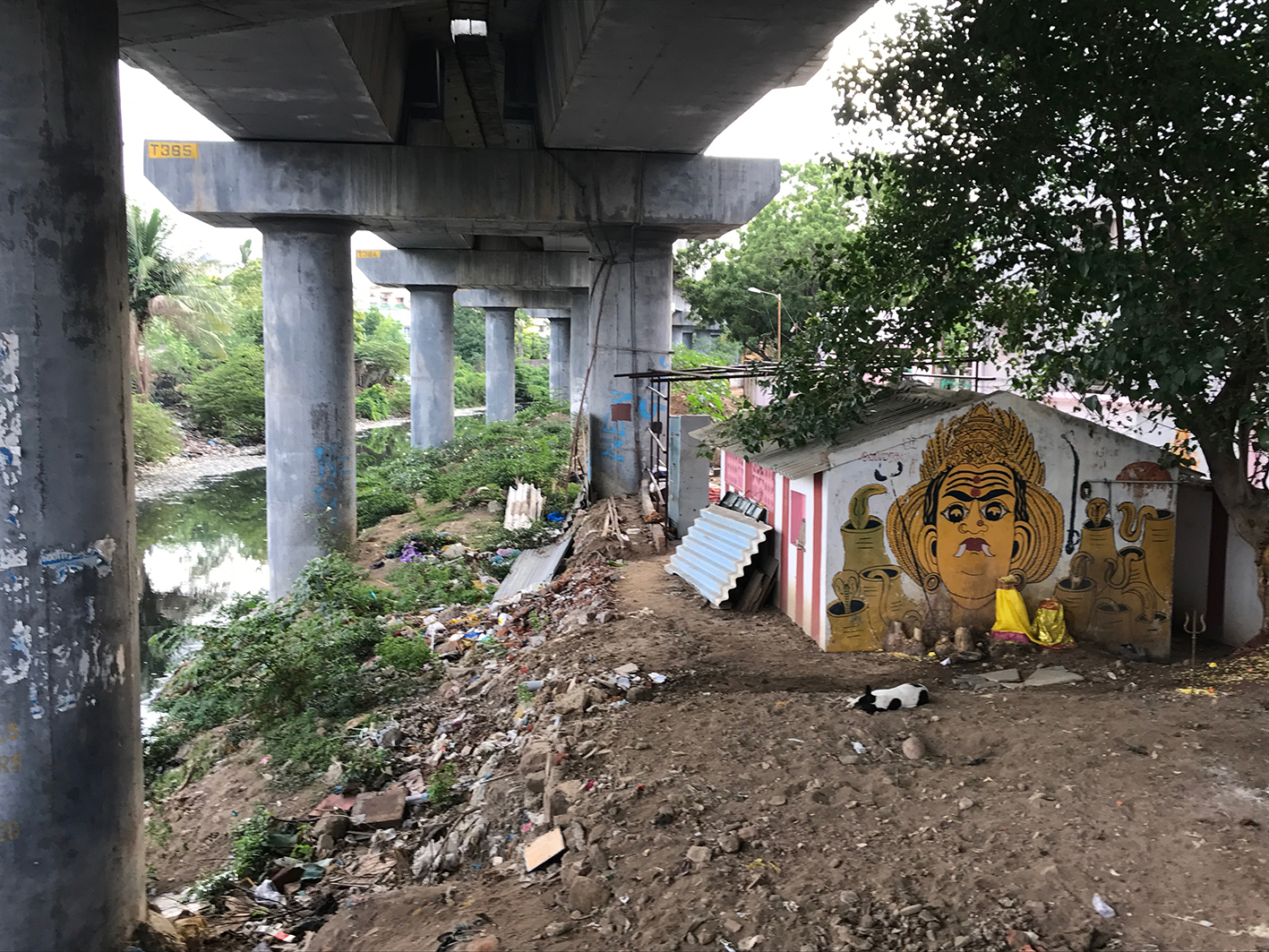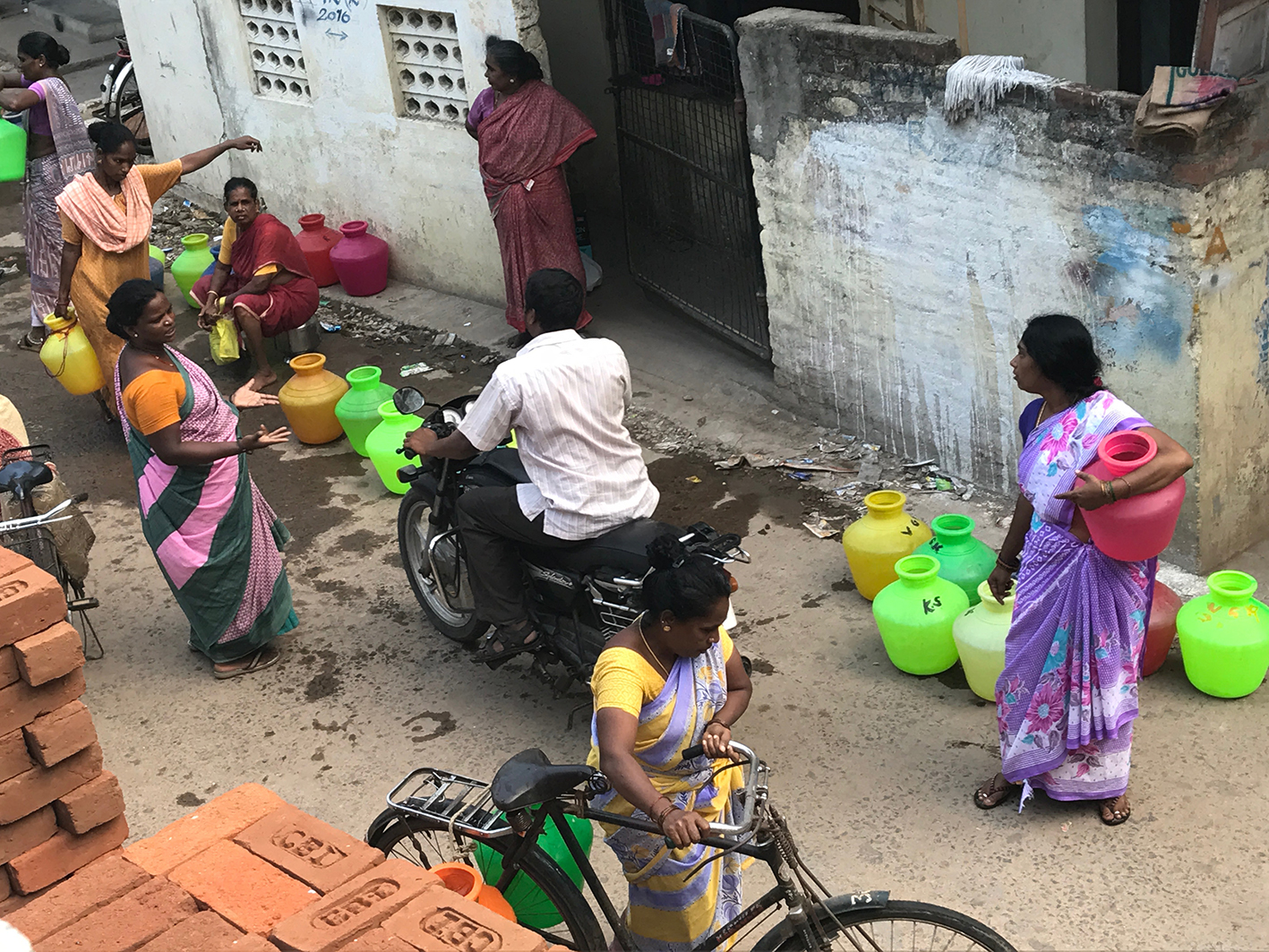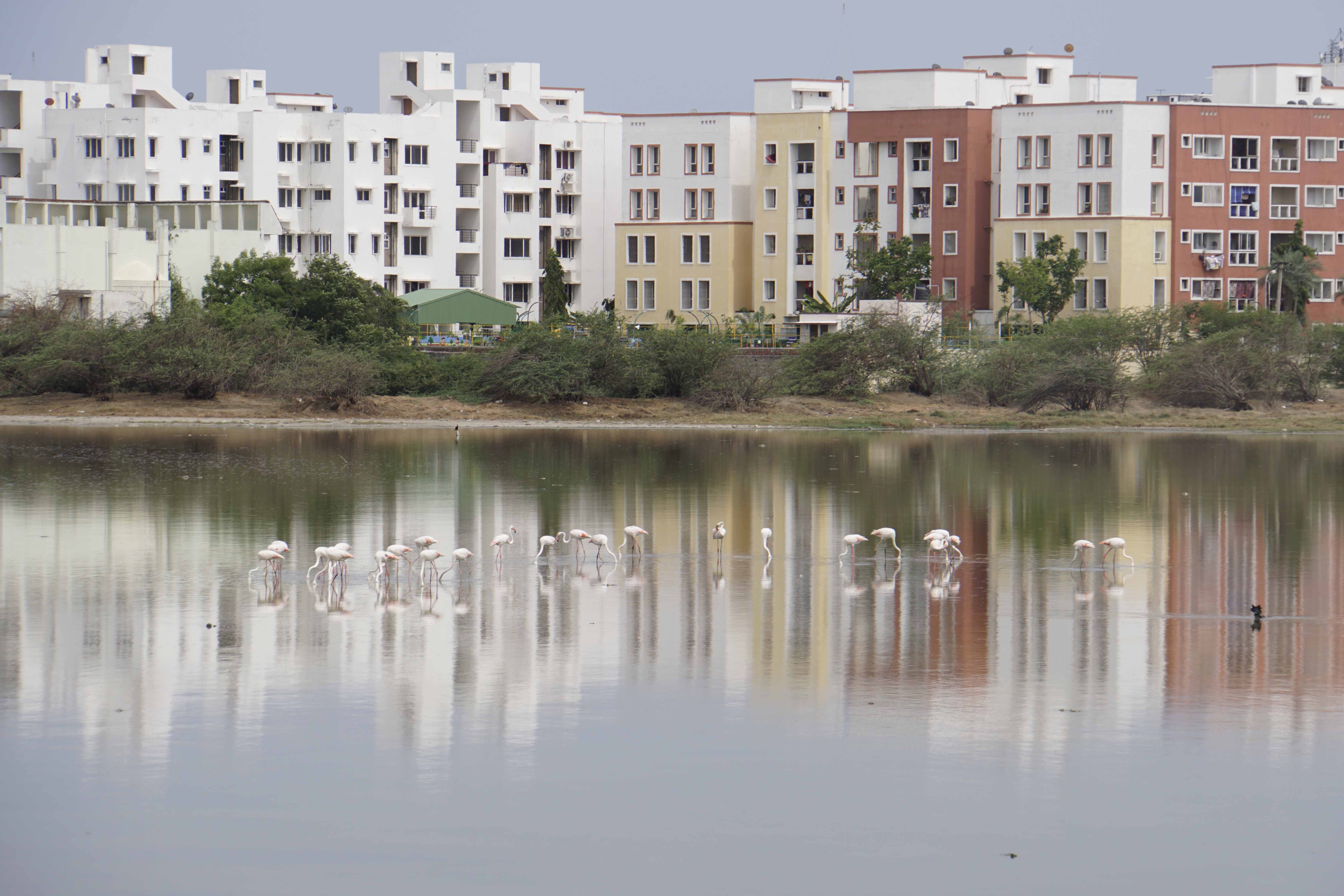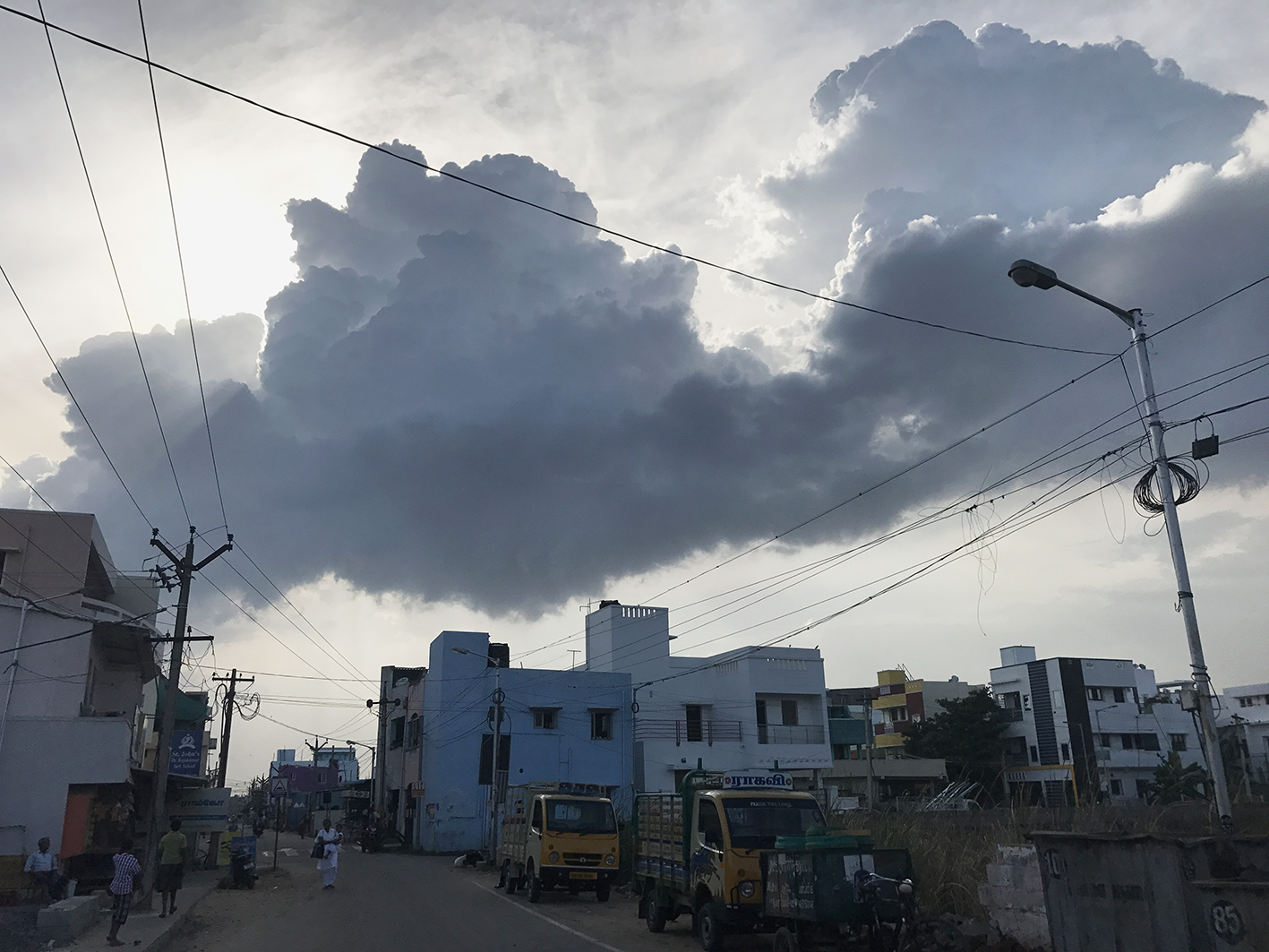Monsoon Assemblages was framed by three overarching concerns: how monsoon weather systems are changing with the changing climate, at multiple scales; how these changes are experienced at a local level, and how urban development models have complicated these experiences. We asked what would happen to the ways cities are planned and built if the monsoon was taken seriously as an organising principle of urban life and urban space, and how this approach could be operationalised through the instruments of spatial design.
The themes of the research were:
We drew on assemblage theory to explore the complex ways in which contemporary monsoon weather systems and urban life and space are entangled and how modes of entanglement have changed over time.

A temple along the Buckingham Canal, under the MRTS line in Chennai. Photograph by Lindsay Bremner.
We were interested in how the rhythms, materialities and spatialities of monsoon weather (air, wind water, ground, seasonality etc.) are embedded in everyday lives, social practices and urban imaginaries through e.g. science, media, politics, planning, routines, cultural rituals and daily life.

Water collection point, Chennai. Photograph by Lindsay Bremner.
We explored the long history of human modifications to atmospheric, hydrological and geological systems in monsoonal cities, with a focus on politics, policies, plans, infrastructures and technologies since the 1980’s.

Housing construction in the Pallikaranai wetlands, Chennai. Photograph by Lindsay Bremner.
By linking assemblage theory with post-human theory, we extended concepts of more-than human agency to include atmospheric, hydrological and geological processes and to pay attention to the multi-species urban ecologies that these agencies assemble.

Housing reflected in the Pallikaranai wetlands, Chennai. Photograph by Lindsay Bremner.
We were interested in how monsoon weather systems are changing with the changing global climate and how these changes are experienced at a local level. We were interested in whether these changes could be operationalised as organising principles of urban life and space through urban planning, urban infrastructure and urban design.

A convection cloud hovers over Bethal Nagar, Chennai. Photograph by Lindsay Bremner.
